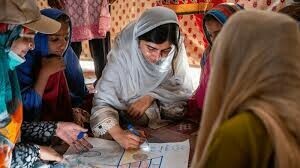While sound management and sustainable exploitation can ensure long-term availability of natural stocks, the steady development of culture-based fisheries is a guarantee for quality exports and high returns. Let us have a look at the world trend of a high growth of culture fisheries, up from six per cent in 1970 to 47 per cent in 2006 in terms of food fish production which is projected to go up to 60 per cent by the year 2020. With the advent of culture-based fisheries, the major portion of exports of fish and shellfish is contributed by aquaculture in case of many Asian countries such as India, Viet Nam, Thailand, Indonesia, Bangladesh and Philippines. These nations are among the top 10 aquaculture producers.
Pakistan's efforts to enhance culture fisheries are being bolstered at both the federal and provincial levels. Fish farming on freshwater side has increased as a result of various development projects launched in the last two decades including the ADB funded projects. But the major increase has been in terms of area rather than increase in per unit production. The main cause behind low production, among others, is the uncontrolled population of weed fishes flourishing at the cost of stocked seed -- and this can easily be harnessed by up keep of sound screening.
In marine aquaculture, we lag behind for many reasons including non- availability of shrimp/marine fish seed. The government of Sindh has established a shrimp hatchery at Hawkesbay which is successfully producing shrimp seed. It is hoped that it will lead to the establishment of shrimp aquaculture. But this hatchery alone may not meet the demand of the rising shrimp aquaculture. Perhaps, the demand can be met from some provincial initiatives and federal government's Aquaculture and Shrimp Farming Project.
Another most important aspect is the cluster-based development of the aquaculture zones. These zones may be developed on the pattern of Export Processing Zones (EPZs) with such facilities as necessary for a successful shrimp/ marine fish farming -- because the coast normally lacks such amenities.
The EPZs provide many facilities like access roads, water, electricity, gas, proper drainage and telecommunications with a secure, environmentally protected, and pollution-free work area. Duty-free import of machinery, equipment and materials are allowed along with other tax exemptions. Generally, one window operation prevails without hassle. Providing such facilities for aquaculture zones is the only way to attract investment in this sector and develop coastal aquaculture in a very short span of time.
Another aspect, which is equally important, is the small scale growth of shrimp aquaculture by involving poor fishermen and coastal communities which are at the other end of unsustainable fishing practices.










































Dear visitor, the comments section is undergoing an overhaul and will return soon.